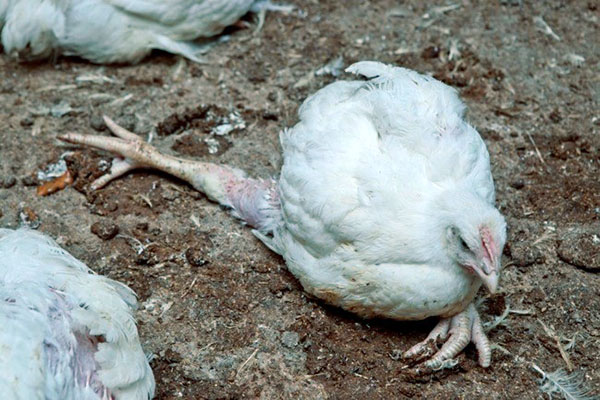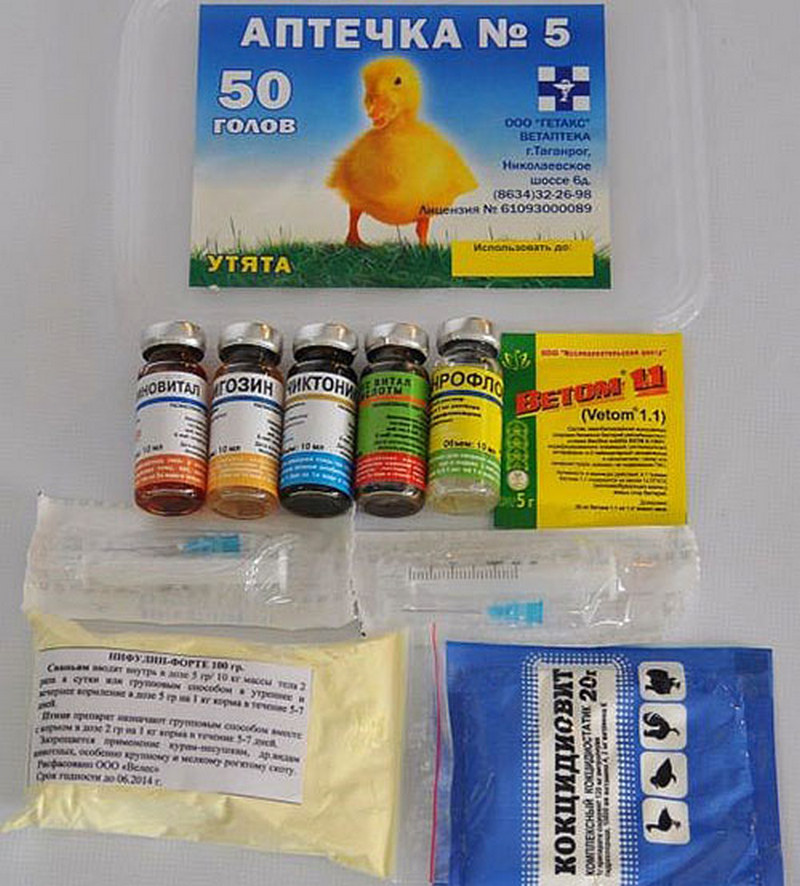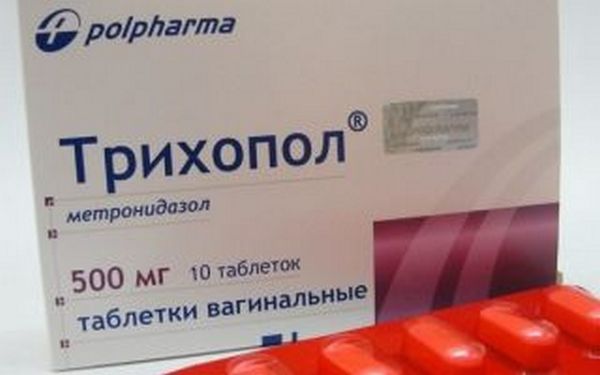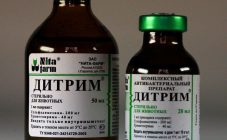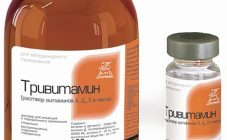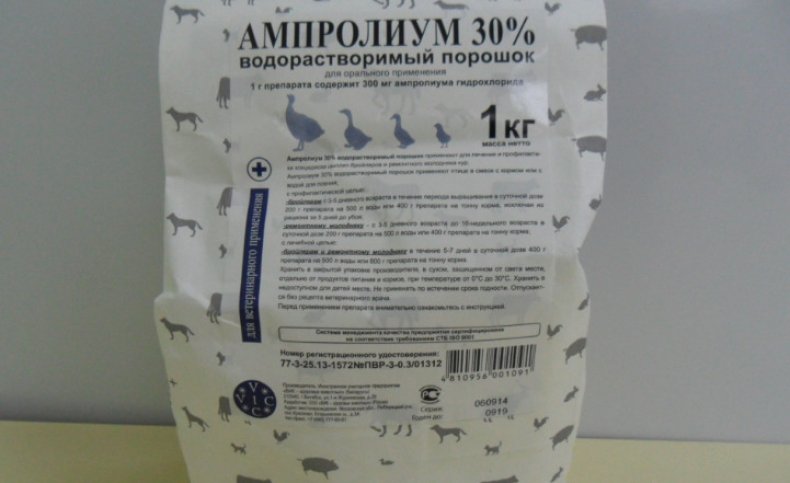Content:
The body of poultry, especially young ones, is often attacked by all kinds of diseases. Particularly dangerous in this regard are viruses that can destroy all livestock in a short time. Poultry farmers know that at the first symptoms it is necessary to start treatment, every hour of delay works for the benefit of the virus. To save chickens from death, and yourself from losses, it is worthwhile to familiarize yourself in advance with the information about the most necessary drugs suitable for both treatment and prevention of poultry diseases.
Metronidazole for diarrhea chickens
There are a number of diseases caused by parasites, one of the symptoms of which is diarrhea. Metronidazole is often used to destroy them - a fairly common drug that is effective in combating anaerobic bacteria and parasites.
He successfully copes with causative agents of diseases such as:
- trichomoniasis;
- coccidiosis;
- histomoniasis.
The listed ailments are dangerous for their ability to infect the digestive tract of the bird, causing foci of inflammation. In the absence of timely treatment, complete liver damage occurs, significant weight loss and death. Moreover, we are not talking about an individual individual, but about the whole livestock of poultry, which can cause serious economic damage to both a private backyard and a large farm.
Signs of trichomoniasis:
- chickens become lethargic, lose activity;
- the temperature rises;
- a yellow coating can be seen in the bird's throat;
- goiter increases;
- there is a yellow-gray diarrhea with a strong pungent odor;
- discharge from the eyes and nostrils appears;
- breathing is difficult.
Symptoms of coccidiosis:
- intense thirst;
- decreased appetite;
- fluffy, fluffy feathers;
- loss of activity;
- presence of diarrhea, sometimes mixed with blood;
- a feeling of chills, expressed in the attempts of chickens to huddle together, to warm up.
Signs of histomonosis:
- decreased activity, depression;
- blue discoloration of the skin on the head, especially noticeable in turkey poults;
- decreased appetite, in severe cases, complete refusal of food;
- untidy, disheveled appearance;
- yellow diarrhea with gas bubbles.
Obviously, diarrhea affecting broiler chickens and young other poultry is only a separate symptom of more serious diseases that require immediate treatment.
All of these diseases occur in unsanitary conditions when young birds consume contaminated feed or water. Moreover, preventive measures must be started in the first days after the acquisition of broiler chickens or the birth of birds.
Metronidazole and Trichopolum: is there a difference?
In addition to metronidazole, trichopolum is actively used in the treatment of invasive diseases.This is an equally effective drug with a number of minor differences.
Metronidazole: characteristics
Since the drug is used to treat both humans and animals, modern pharmaceuticals offer various forms of release:
- pills;
- cream;
- powders;
- solutions;
- granules.
Granules and tablets are most convenient for use in the treatment of domestic animals, therefore, they are most often used in veterinary medicine.
The weight of the tablet and the content of the active substance in it can be as follows:
- 0.25 g (25% antibiotic);
- 0.5 g (25% antibiotic);
- 0.5 g (50% antibiotic);
- 1 g (25% antibiotic).
As auxiliary substances, metronidazole contains octadecanoic acid, talcochlorite, starch.
The drug is not used to destroy fungi and aerobic microorganisms.
Metronidazole is very quickly absorbed by the digestive system, spreading throughout the body and accumulating in the liver. Therefore, oral administration with food is most effective. You can also drink it with water.
The medicine is excreted in the feces, giving it a brownish color. For complete elimination, 2 days are enough.
This agent affects the respiratory system of the parasite, causing its early death.
Trichopolum: characteristic
Trichopolum is an antiparasitic, antibacterial drug that is analogous to metronidazole. Both drugs have the same active ingredient.
Trichopolum release form - tablets or powder. In tablet form, it usually contains 0.25 g of active ingredient.
The pharmacokinetics of the drugs are the same, the range of applications is the same. Both are effective and readily available and can be purchased over the counter.
In addition to the various ancillary components, medicines vary in price. A simpler drug, with slightly more side effects, is metronidazole. Therefore, its price is slightly lower. Trichopolum is more easily absorbed by the body, it is even used to treat pregnant women and young children. Because of this, this drug is more expensive. Which of these tools to choose is not so important. They have the same principle of operation.
Application and dosage of drugs
Trichomoniasis and other similar diseases are not limited to broiler chickens. They also suffer from turkey poults, ducklings and other waterfowl, as well as pigeons and other poultry. Accordingly, the dosage should be selected for each specific type.
For broiler chickens
Despite the fact that antibiotics are not usually soldered for preventive purposes, it is an acceptable practice in the poultry industry.
Healthy chickens in the first days of life are given 20-25 g of the drug per 1 kg of live weight. Then the procedure is repeated once every 14 days until the young are 1.5 months old.
The easiest and most convenient way to feed the preparation to a bird is considered to be mixing it into the feed. The tablets are crushed into powder and added to food immediately before feeding.
In the presence of the first signs of coccidiosis, trichomoniasis or histomonosis, the regimen is changed. Metronidazole in the same dosage (20-25 g per 1 kg of fat) is given to chickens for 2-5 days. A week later, the course is repeated.
Considering that a sick bird loses its appetite, it can be problematic to feed the medicine with food. However, the drug is not diluted in water: it does not dissolve very well, quickly settling to the bottom. If we are talking about a private backyard with a small livestock of birds, you can try to water each chicken separately, stirring the powder in water as thoroughly as possible.
Easily diluted with water in the broiler drinker. The dosage with Trichopolum water for broiler chickens is approximately 25 g per 1 kg. This will make it more convenient to water adult layers. In the case when metronidazole is used for chickens, the dose of the drug will be 1.5 g per 1 kg of live weight.
For waterfowl
For ducklings and goslings, metronidazole for prophylaxis is given according to the same scheme and in the same dosage as for chickens.
For turkeys
Most often, turkey poults are affected by histomonosis, especially those that have reached 2 weeks of age.
As a prophylaxis, young animals are given Metronidazole in an amount of 20 g per 1 kg of live weight, for 2 days. Also admission according to the scheme for broiler chickens is acceptable.
For medicinal purposes, the medicine is given in an amount of 30 g per 1 kg of live weight, dividing the daily portion into 3 times 10 g. The course of treatment is 10 days.
The following method is also applicable: 0.75 g of metronidazole is added to 1 kg of feed. Give the whole portion at once, once a day. The duration of admission is also ten days.
Trichopolum for chickens and other birds, given in a similar dosage, taking into account the content of the active substance in 1 tablet. The method of administration is also oral: either individually soldered from a pipette, or added to the feed.
For other types of poultry, such as quail or guinea fowl, the dosage is 20 mg of Metronidazole per 1 kg of body weight per day, 10 g each morning and evening.
Several important nuances
In order not to harm the young and to carry out the treatment competently, several points must be taken into account.
If, in the event of a bird disease, it is possible to get a quick consultation from a specialist, this should be done without fail. Self-diagnosis and treatment, as in the case of a person, is a risky business. The layman is very likely to be mistaken.
An individual intolerance to the drug can serve as a contraindication to use, but in birds, allergic reactions are observed much less often than in humans, so the likelihood of harm is small.
In order to avoid infection of young animals with various diseases, it is very important to keep feeders and drinkers clean, and to remove droppings on time.
In sick chicks, especially waterfowl, discharge from the nose and eyes is a common symptom of the disease. A 0.1% solution of Trichopolum used for washes can eliminate this nuisance.
Trichopolum or metronidazole for broilers, the dosage of which is selected correctly, does not give side effects. But in rare cases of allergies, it is necessary to cancel the drug and contact the veterinarian to prescribe another remedy of similar action.
A healthy and active bird eats well and therefore gains weight quickly. The key to health is attentiveness to young animals and preventive measures of protection. Sick birds are also not doomed at all: they can and should be treated. It is only important to correctly observe the dosage and regimen of the drug. Therefore, read the instructions for use before using metronidazole in chicks.
